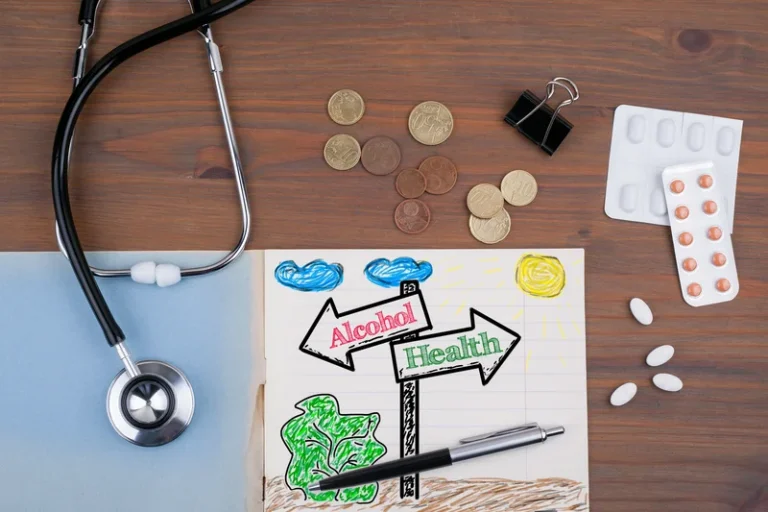
The adaptations within these systems contribute to withdrawal-related symptoms, seizures, and neurotoxicity. Alcoholics who are awaiting surgical or medical treatment often exhibit DT’s when their alcohol consumption is abruptly interrupted by hospitalization. Therefore, hospital staff must remain vigilant for signs and symptoms of alcohol withdrawal, even in patients not known to be alcoholic.
Delirium Tremens
The only way to lower the risk of severe alcohol withdrawal seizures is to seek addiction treatment as soon as possible. ED clinicians are responsible for risk-stratifying patients with alcohol withdrawal syndrome under time and resource constraints, and must reliably identify those who are safe for outpatient management versus those who require more intensive levels of care [7]. Published clinical guidelines recommend stratifying patients with alcohol withdrawal based on their risk of developing complications (e.g., generalized tonic-clonic seizures and delirium tremens) [15–18]. These guidelines are largely limited to the primary care and outpatient settings and do not provide specific guidance for ED clinicians [15–17]. Patients who experience harms from alcohol and other substance use often seek care in the emergency department (ED).
Can alcohol trigger seizures?
- Binge drinking (consuming 4-5 drinks or more in a short period of time) is linked to a higher risk of alcohol-related seizures due to withdrawal effects after you stop drinking.
- In contrast to epileptic seizures, alcohol withdrawal seizures originate in brainstem systems and involve unique cellular and molecular mechanisms.
- For people with epilepsy, alcohol may interact with epilepsy medications and worsen their side effects or make the medications less effective in preventing seizures.
- Some researchers have hypothesized that repeated AW may predispose alcoholics to certain anxiety disorders through the process of kindling (see the article by Becker, p. 25–33) (Lepola 1994).
Alcohol withdrawal causes a range of symptoms when a person with alcohol use disorder stops or significantly decreases their alcohol intake. The symptoms can range from mild to severe, with the most severe being life-threatening. Moderate alcohol consumption is the best strategy for reducing the risk are alcohol withdrawal seizures dangerous of alcohol-related brain damage. People who binge drink, drink to the point of poor judgment, or deliberately become drunk many times each month have a much higher risk of alcohol-related brain damage. Over time, people who consume large quantities of alcohol develop a tolerance to the drug.
Mechanisms Linking AUD to TBI
Without treatment, DT can be fatal in more than one-third of people whom it affects. People with DT may experience seizures, dangerous changes in blood pressure, and excessive vomiting and diarrhea, which can result in nutritional deficiencies. Severe head injuries may even be fatal because they affect the brain’s ability to control essential functions, such as breathing and blood pressure. Vitamin supplements and complete abstinence from alcohol may reverse symptoms of Wernicke-Korsakoff syndrome within the first 2 years after stopping drinking. Over time, excessive alcohol consumption can damage both the brain and liver, causing lasting damage. A doctor will take a thorough health history and have you complete questionnaires related to alcohol intake to help diagnose these conditions.
- Over time, people who consume large quantities of alcohol develop a tolerance to the drug.
- In addition, in experiments with recombinant GABAA receptors, low concentrations of GABA were not found to affect the most abundant GABAA-receptor isoforms, which contain the γ2 subunit.
- Binge drinking is defined as a pattern of alcohol intake that causes the blood alcohol concentration (BAC) to be 0.08% (0.08 g/dL) or higher.
- That means you (or your loved one) won’t have to worry about covering the cost of treatment.
A number of experimental procedures have been used to demonstrate increased behavioral anxiety in animal models of alcohol dependence and withdrawal (Becker, 2000; Kliethermes, 2005). Many of these models involve procedures that exploit the natural tendency for rodents to avoid environments that may be considered dangerous or threatening and, thereby, elicit an internal state of “fear” or “anxiety” (e.g., bright open spaces). Nevertheless, anxiety and other symptoms reflective of a state of psychologic discomfort (e.g., irritability, agitation) are firmly established as clinically significant components of the alcohol withdrawal syndrome. In the past several years, dramatic advances have been made in understanding the short- and long-term effects of alcohol on the central nervous system. These advances have provided new insight into the pathophysiology of alcohol withdrawal seizures.

Why Medical Detox Is Recommended for Alcoholics

Similarly, phenytoin is not effective in protecting against the occurrence of seizures in withdrawing alcoholics (71,72). Valproate is protective against alcohol withdrawal convulsions in mice (73). The intravenous formulation is gaining acceptance in the clinical management of status epilepticus so that it could potentially be used in prophylaxis against alcohol withdrawal seizures.
- If you then suddenly reduce or stop alcohol use, your nervous system becomes overactive due to an imbalance in calming and excitatory neurotransmitters.
- The optimal dose is not settled, but because parenteral thiamine administration is generally safe, diagnosis of thiamine deficiency is difficult, and potential consequences of not treating are devastating; erring on the side of caution with liberal dosing is to be recommended.
Generalized onset clonic seizures
For people with epilepsy, alcohol may interfere with anti-seizure medications and increase the risk of seizures. People with alcohol withdrawal seizures may also experience tremors, hallucinations, muscle spasms, and a rapid heart rate. In people with epilepsy, drinking three or more drinks may increase the risk of seizures. Over half of those with alcohol withdrawal seizures may have repeat seizures, and up to 5% of cases may lead to status epilepticus.

- In addition, alcoholics show increased incidence of interrupted breathing during sleep compared with the general population.
- The heart is a major site of alcohol-induced organ damage, including disturbances of heartbeat rhythm (Smith 1995).
- As safe alcohol consumption varies from person to person, and different sources recommend various intakes, it is important to take an individualized approach.
- Drinking alcohol can also have negative effects on the peripheral nervous system (PNS).
- Alcohol causes intoxication through effects on diverse ion channels and neurotransmitter receptors, including GABAA receptors—particularly those containing δ subunits that are localized extrasynaptically and mediate tonic inhibition—and N-methyl-D-aspartate (NMDA) receptors.
Indeed, brain regions that express δ subunits, including the cerebellum, cortical areas, thalamic relay nuclei, and brainstem (38), are among those that are recognized to mediate the intoxicating effects of alcohol. Mody (39) has proposed that such δ subunit–containing GABAA receptors are located largely perisynaptically or extrasynaptically, where they mediate tonic inhibition of neurons by ambient GABA. The functional role of tonic GABA current is still obscure (40), but the current could act to reduce network oscillations (41). It is interesting to speculate that extrasynaptic GABAA receptors may be activated by spillover of GABA when GABAergic interneurons are intensely activated, such as during a seizure discharge, thus producing negative feedback.

Antiseizure Medications
Alpha2-adrenergic agonists like clonidine and dexmedetomidine should not be used alone to prevent alcohol withdrawal seizures or delirium as they “do not treat the underlying pathophysiology” (70). These medications may be used as adjunctive therapy with benzodiazepines in the treatment of anxiety or autonomic hyperactivity that persist in spite of benzodiazepine use, as a benzodiazepine-sparing treatment for alcohol withdrawal syndrome in the ICU (70). Paradoxically, length of stay in the meta-analysis favored standard benzodiazepine therapy when analyzing cohort studies, but dexmedetomidine adjunctive therapy was significantly favored when randomized controlled trials were analyzed.

Write a comment: